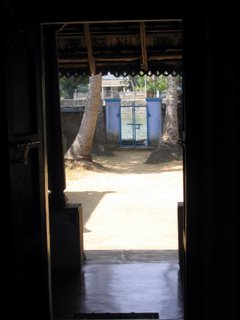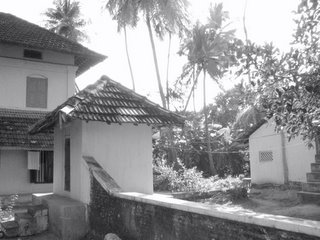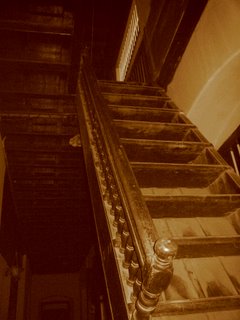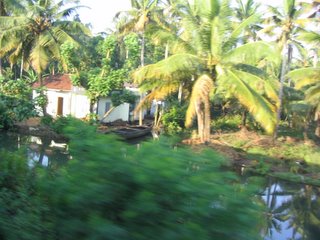Tracing Traditions
The symbolisms that have ornate karate are seeped in tradition. And I cannot but wonder, if these traditions were art specific or more a product of culture and time. I will not retrace the traverse of Bodhidharma, the prince of Sardilli family (Southern India Pallava Kingdom, 482 A.D), from a kalaripaiyttu warrior to the patriarch of Zen Buddhism (28th patriarch of Buddhism) and the introducer of Shaolin kungfu. Chinese martial arts are the foundation for Okinawan karate, to a large extent. Zen is the sanctum sanctorum of budo (i.e., the martial way*), and the underlying wisdom of “Ken zen ichijo” (i.e., Karate and Zen are one). Zen derives itself from the Chinese word “Chan” which in turn finds its root in the Sanksrit word “Dhyan”. So are Indian traditions and symbols intertwined in karate?

Through my recent travel to Kerala, the home of the ancient martial art of Kalaripaiyttu, I began to realize the striking similarities in martial arts to dance. Kathakali, a dance form, shares the exercises and training routines akin to that in Kalaripaiyttu. The channels of energy, the mindfulness, the balance and grace entwine dance and martial arts. I wonder if the tradition of ‘Kata’ (i.e., collection of fighting techniques) in karate, is derived from the story telling nature of dance? Is it just coincidental that the Sanskrit word for story telling is ‘Katha’? Both are more than a series of steps and hand techniques, and truly cannot be framed in words. The stories are so effectively portrayed that they invoke a higher consciousness and is ingrained in Hindu mythology. Tales of Gods vanquishing demons, the triumph of good over evil, to more subtle romanticisms are conveyed through surreal movements from eyes to feet.
A visit to an old temple highlighted even more similarities. The image of the Goddess performing an advanced blocking technique of karate confounded me; before I realized the parody of my thought process. Later, demonstrating the similar posture to someone more traditionally well versed, the answer was quite simple, it was a ‘mudra’, a hand gesture*. This mudra is aptly called the ‘Abhaya – Vardan mudra’; Abhaya represents protection and dispelling of fear while Vardan signifies the giving, compassion and boon granting. These mudras (and more) are the corner stone of classical Indian dance forms. A logical extrapolation is that these mudras also became a part of Buddhism and found its way from China to Okinawa. Does the karate block (i.e., tora guchi) that I have mindfully done only as a self defense technique have a deeper meaning? The totality of any mudra, the higher power it beckons, the internal energy it generates; still eludes my understanding, and the myth – reality dance continues.

Nataraja (i.e., nata = dance; raja = king), the cosmic dance of lord Shiva, symbolizing the cycles of creation and destruction*. A widely accepted symbol as the God of martial arts is Busaganashi (I have not yet completely traced back its roots, but I believe its from Fukien province in China, and Busaganashi is also known as the Nine Heavens Deity of the Palace of Wind and Fire of the Three Field City). Coincidence?

In a world accelerating forwards, traditions play an important role in not losing sight of who we are and where we come from. Tradition is what separates man from man, and how strangely unites him as well.
*: The symbolism and true meaning is difficult to capture in words.























